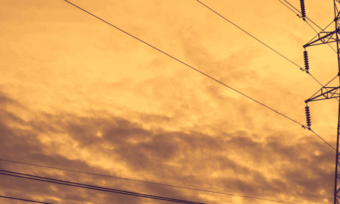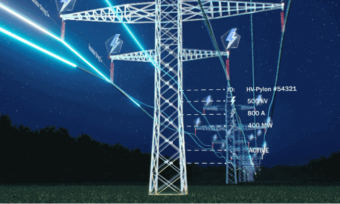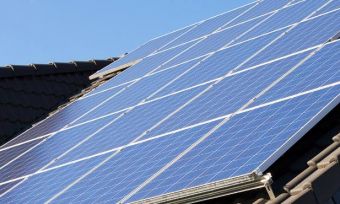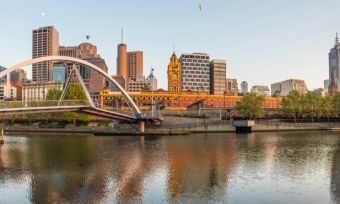How often do you pay electricity bills in Australia?

Opening an energy bill can be stressful, especially when you’re expecting a big one – but choosing the right billing options for your budget can help take the edge off. While most Australians receive their electricity bills quarterly, there are other billing options available that may better suit your needs and make managing those bills a little easier.
In this guide, Canstar Blue discusses the different energy billing and payment options available to households in Australia and how they could impact your budget.
On this page:
How does energy billing work?
Understanding how energy billing works is the first step to better managing your bills and removing some of the stress that can come with them. The way you receive electricity bills depends on the type of meter you have:
- If you have an old accumulation or interval meter, you’ll need a meter reader from your local energy distributor to visit your property (usually just once every three months) and provide a reading to your energy retailer for billing purposes.
- If you have a smart meter, there’s no need for anyone to visit your property, with your meter read remotely by your energy distributor before passing the details onto your retailer for billing.
Depending on how and when your meter is read, you may be eligible for either monthly or quarterly energy billing.
Monthly vs quarterly billing
Would you rather pay four or 12 energy bills per year? That’s a choice most energy retailers will make available to customers, and it’s important to think carefully about what works best for you. The average quarterly electricity bill in Australia is about $300-$375 . You can choose to make these payments four times per year, or you can opt for monthly bills, which means you’ll pay smaller amounts more frequently.
If you prefer the idea of monthly energy bills, there is an important catch to be aware of if your home does not have a smart meter. Given that a meter reader will only be sent to your property every three months, you may need to receive estimated bills in between the accurate bills actually based on meter readings. These quarterly bills will then be adjusted to settle your true balance. If you have a smart meter at your property, you will be able to request accurate bills every month.
Compare Cheap Electricity Prices
Here are some of the cheapest published deals from the retailers on our database that include a link to the retailer’s website for further details. These are products from referral partners†. These costs are based on the Ausgrid network in Sydney but prices may vary depending on your circumstances. This comparison assumes general energy usage of 3900kWh/year for a residential customer on a single rate tariff. Please use our comparison tool for a specific comparison in your area. Our database may not cover all deals in your area. As always, check all details of any plan directly with the retailer before making a purchase decision.
Here are some of the cheapest published deals from the retailers on our database that include a link to the retailer’s website for further details. These are products from referral partners†. These costs are based on the Citipower network in Melbourne but prices may vary depending on your circumstances. This comparison assumes general energy usage of 4000kWh/year for a residential customer on a single rate tariff. Please use our comparison tool for a specific comparison in your area. Our database may not cover all deals in your area. As always, check all details of any plan directly with the retailer before making a purchase decision.
Here are some of the cheapest published deals from the retailers on our database that include a link to the retailer’s website for further details. These are products from referral partners†. These costs are based on the Energex network in Brisbane but prices may vary depending on your circumstances. This comparison assumes general energy usage of 4600kWh/year for a residential customer on a single rate tariff. Please use our comparison tool for a specific comparison in your area. Our database may not cover all deals in your area. As always, check all details of any plan directly with the retailer before making a purchase decision.
Here are some of the cheapest published deals from the retailers on our database that include a link to the retailer’s website for further details. These are products from referral partners†. These costs are based on the SA Power network in Adelaide but prices may vary depending on your circumstances. This comparison assumes general energy usage of 4000kWh/year for a residential customer on a single rate tariff. Please use our comparison tool for a specific comparison in your area. Our database may not cover all deals in your area. As always, check all details of any plan directly with the retailer before making a purchase decision.
Are there other payment frequency options?
Most energy retailers offer customers the option of either monthly or quarterly billing. However, it’s not unheard of for energy retailers to allow for annual billing. This means the customer would pay for the whole year’s worth of energy upfront, which would be an estimated amount based on previous energy usage history.
If you’re keen to pay your energy bill weekly or fortnightly, you can opt for a bill smoothing option, where your provider estimates your annual usage cost and spreads that cost across the year. Keep in mind that your weekly or fortnightly payments are based on an estimation only, so if you use more power that year than your provider estimated, you will need to pay for that power in a lump sum at the end of the year.
Customers may also use more frequent billing cycles, such as weekly or fortnightly, if they’re on an energy payment plan as part of an energy hardship policy. This allows customers to pay their debt in smaller installments over a longer period of time.
Should I sign up for direct debit payments?
In most cases, your electricity retailer will be keen to get you to sign up for direct debit payments, meaning the bill amount will automatically be withdrawn from your nominated bank account. And while some energy customers may also prefer the convenience of automatically paying by direct debit, there are things to be aware of. The main is that if you don’t have the money in your bank account on the bill’s due date, your bank may not accept the withdrawal attempt from your energy retailer, meaning you’ll be charged a late payment fee. You may also incur a fee from your bank as a result.
If you don’t like the idea of direct debiting, there are other manual payment options available as well:
-
- If you have an online account, you could make a payment through your retailer’s website.
- You could also pay through your energy retailer’s app (but watch out for small card fees).
- Most retailers allow for payments to be made via online money transfer sites like BPAY or PayPal.
- Under industry regulations, some retailers must also accept payments by mail (for cheques and money orders) as well as over the counter at Australia Post branches.
- Make a card payment over the phone.
Electricity plans with direct debit discounts
Here are the plans on our database that have direct debit discounts in NSW. These costs are based on the Ausgrid network in Sydney but prices may vary depending on your circumstances. This comparison assumes general energy usage of 3900kWh/year for a residential customer on a single rate tariff. Please use our comparison tool for a specific comparison in your area. Some of these products may be from referral partners†. Our database may not cover all deals in your area. As always, check all details of any plan directly with the retailer before making a purchase decision.
Here are the plans on our database that have direct debit discounts in QLD. These costs are based on the Energex network in Brisbane but prices may vary depending on your circumstances. This comparison assumes general energy usage of 4600kWh/year for a residential customer on a single rate tariff. Please use our comparison tool for a specific comparison in your area. Some of these products may be from referral partners†. Our database may not cover all deals in your area. As always, check all details of any plan directly with the retailer before making a purchase decision.
Here are the plans on our database that have direct debit discounts in SA. These costs are based on the SA Power network in Adelaide but prices may vary depending on your circumstances. This comparison assumes general energy usage of 4000kWh/year for a residential customer on a single rate tariff. Please use our comparison tool for a specific comparison in your area. Some of these products may be from referral partners†. Our database may not cover all deals in your area. As always, check all details of any plan directly with the retailer before making a purchase decision.
What’s the best way to pay my energy bills?
Whether you pay monthly, quarterly, by direct debit, or a manual form of payment, the most important thing is that you pay your energy bills on time. Failing to do so could mean you’re charged extra for a late payment – and no one wants that.
Monthly bills are certainly convenient for those who like to avoid larger quarterly lump-sum payments, in that you’ll be paying a smaller amount, more often. However, others may prefer to have cash in their bank account for longer and save for their quarterly bills. The decision here is based on personal preference.
However often you pay your energy bills, make sure you’re getting a good deal. It’s easy to fall into the trap of receiving a bill in the mail and paying it without question. Remember that there can be a big difference between the cheapest and most expensive energy deals out there, so it pays to compare energy plans and providers for the best deal to suit your needs.
Image credits: suksom/Shutterstock.com, FGC/Shutterstock.com, hafakot/Shutterstock.com
Original author: Jared Mullane

Rachel Bollerman is a Content Producer on Canstar Blue's Editorial team. She covers a variety of content, including consumer goods and services, and energy and telco. After graduating with a Bachelor of Communications, majoring in Journalism at the Queensland University of Technology, Rachel has worked in a variety of public relations, marketing and communications roles. She has experience in community management, social media marketing, blog writing and other styles of copywriting. Prior to joining Canstar, Rachel worked at the Institute for Urban Indigenous Health where she assisted with campaign management and communications across the organisation. When she's not working, Rachel enjoys doing arts and crafts projects at home and spending time with friends.
You can follow Rachel on LinkedIn.








